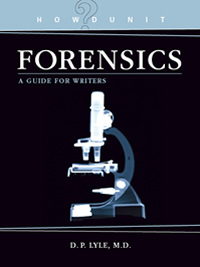With New Year’s Eve just days away I think this post might be appropriate. File this under a fraternity prank gone wrong.
We’ve all heard stories of college students binge drinking, passing out, being tucked in by classmates to “sleep it off,” and then turning up dead the next morning. The reason this occurs so commonly lies in the way the body metabolizes (destroys or breaks down) alcohol. It does so in a linear fashion as opposed to a dose-dependent fashion. This means that the system for destroying alcohol runs at its highest level at all times regardless of how much alcohol is consumed. With increased alcohol intake there is no way to “rev up” the system to handle the excess because the metabolic pathways are already running at maximum capacity. This allows the blood-alcohol level to rise rapidly and this is what leads to death from respiratory depression and asphyxia.
This nearly happened to University of Tennessee student Alexander Broughton, but not in the usual fashion. Most students drink alcohol but it seems that Alexander was given an alcohol enema as part of a fraternity hazing ritual. An activity that seems to go by the colorful moniker “Butt Chugging.” Really?
Broughton denies that this is the case but, whether it happened to him or not, it is still a lesson for anyone who might wish to try this. Though for the life of me I can’t see why anyone would.
It is important to note that many drugs can be given through the colon because they are absorbed very rapidly into the bloodstream through the lining of the lower G.I. tract. Alcohol is no different. So taking the alcohol as an enema is probably more dangerous than drinking it as it is absorbed very rapidly into the bloodstream when given by this route.
Alcohol Metabolism: From HOWDUNNIT: FORENSICS:
The body eliminates most toxins in what is called a dose-dependent fashion. That is, the higher the dose taken, the more rapidly the toxin is metabolized. A small amount will activate only some of the enzymes that break down the toxin, whereas a larger amount will activate more enzymes in order to handle the increased load of toxin. In other words, the body calls up enough workers to get the job done quickly.
But, alcohol is metabolized in a linear fashion in that any amount of alcohol intake activates all the enzyme systems that destroy it. This means that from the first drink, the system operates at almost maximum efficiency and there is little or no ability to increase it. The average rate of ethanol destruction in the body is roughly equivalent to one drink per hour.
Why is this important? With rapid intake of alcohol, as is seen in binge drinking, so common among college students, the body has no method for increasing the removal of the alcohol. The system is already running at top speed and excessive intake overruns the body’s ability to deal with it. The result is that the concentration of alcohol in the blood will rise rapidly and this can lead to coma and death. You’ve no doubt read about such tragedies in the newspaper.
The story usually goes something like this: Joe gets very drunk at a party and passes out. His friends tuck him onto bed somewhere and continue partying, thinking Joe will “sleep it off.” Unfortunately, Joe still has a stomach full of alcohol, which continues to enter Joe’s bloodstream. Since Joe’s alcohol-destroying enzyme systems are already working at maximum capacity, the level of alcohol in the blood continues to rise, finally reaching a level that causes Joe to stop breathing. His corpse is found the next morning when everyone has sobered up. Happens all too often.
The blood alcohol content (BAC) correlates very well with degree of intoxication. The BAC level is expressed in grams percent, which means the number of grams of alcohol in each 100 milliliters of blood. As the level rises, the toxic effects of the alcohol become more pronounced. A level of 0.08 is the legal limit for intoxication in most jurisdictions. You may be impaired at a much lower level, but at 0.08 they’ll cuff you. The correlation of the BAC with the signs and symptoms of intoxication are well established.
BAC of 0.03: Most people will become giddy, but their motor skills will be little affected. This is equivalent to a single beer or one high ball in most individuals.
BAC of 0.03 to 0.08: Coordination, reaction time, and judgment decline.
BAC above 0.12: Nausea and vomiting can occur.
BAC of 0.25: Slipping into a coma is likely.
BAC of 0.30: Usually leads to a deep coma.
BAC of 0.40 or more: Death is likely.








































